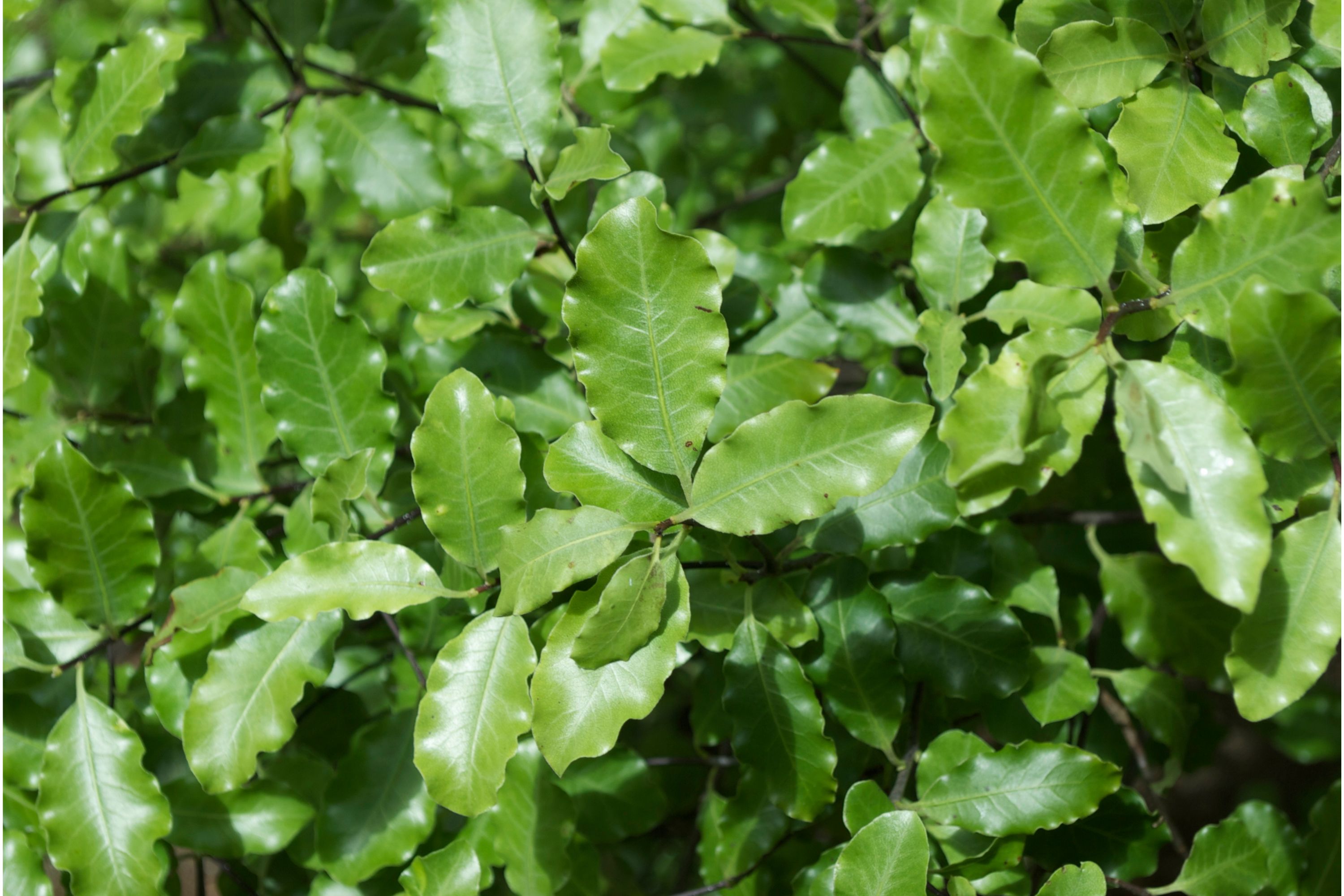Kohuhu
(Pittosporum tenuifolium)

Description
Pittosporum tenuifolium, commonly known as Kohuhu or Black Matipo, is a species of evergreen shrub or small tree in the Pittosporum genus. The plant is native to New Zealand and is widely cultivated in many countries as an ornamental plant due to its attractive foliage, flowers, and versatile growth habit. In this article, we will explore the botanical and horticultural aspects of Pittosporum tenuifolium in detail. Botanical Description Pittosporum tenuifolium belongs to the Pittosporaceae family and is a multi-stemmed shrub or small tree that can grow up to 10 meters in height. The plant has a dense, bushy growth habit, with a rounded or conical shape. The leaves are leathery, glossy, and ovate to lanceolate in shape, measuring 3-10 cm long and 1-3 cm wide. The upper surface of the leaves is dark green, while the underside is paler. The leaves are arranged alternately on the stem, and they emit a distinctive spicy fragrance when crushed. The flowers of Pittosporum tenuifolium are small and inconspicuous, measuring about 1 cm in diameter. They are yellow-green in color and have a pleasant, sweet fragrance. The flowers are produced in clusters at the tips of the branches in spring and early summer. The fruit of Pittosporum tenuifolium is a woody capsule that contains numerous seeds. The capsule measures about 2 cm in diameter and splits open when ripe, releasing the seeds. Cultivation and Uses Pittosporum tenuifolium is a popular ornamental plant in many countries due to its attractive foliage, flowers, and versatility in the landscape. The plant is often used as a hedge, screen, or windbreak due to its dense growth habit and tolerance for trimming. It is also used as a specimen plant in gardens, parks, and public spaces. Pittosporum tenuifolium is a hardy plant that grows well in a range of soil types, including sandy, loamy, and clay soils. The plant prefers well-drained soils and can tolerate moderate drought once established. It grows best in full sun to partial shade and is tolerant of coastal conditions and light frost. Propagation of Pittosporum tenuifolium is usually done by seed or cuttings. Seed propagation is straightforward, with the seeds sown in spring or autumn in a well-draining seed-raising mix. Cuttings are taken from semi-hardwood or hardwood stems in summer or autumn and treated with rooting hormone before being planted in a well-draining potting mix. Pests and Diseases Pittosporum tenuifolium is generally a hardy plant that is not prone to many pests and diseases. However, like all plants, it can be affected by a few common problems. The most common pests of Pittosporum tenuifolium are aphids, mealybugs, and scale insects. These pests can be controlled using insecticidal soap or oil sprays. The most common diseases of Pittosporum tenuifolium are fungal infections, including root rot, leaf spot, and powdery mildew. These diseases are usually caused by poor growing conditions, such as overwatering or poor air circulation. They can be prevented by ensuring the plant has well-draining soil, adequate water, and good air circulation. Conclusion Pittosporum tenuifolium is a versatile and attractive plant that is popular in many countries as an ornamental plant.
Taxonomic tree:







